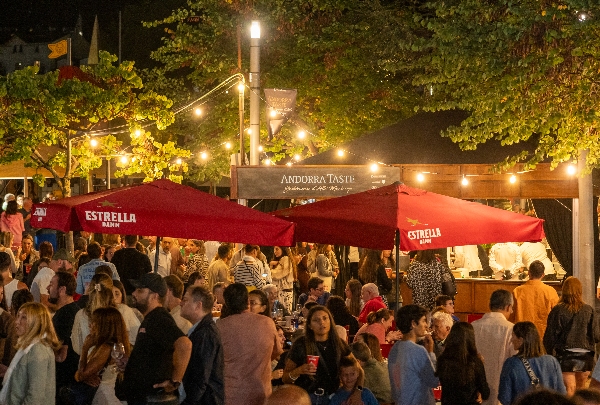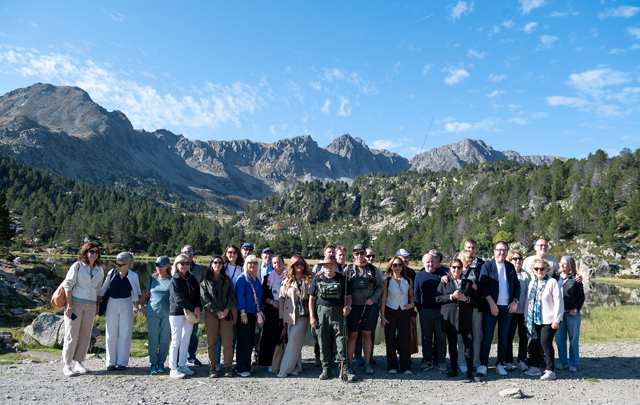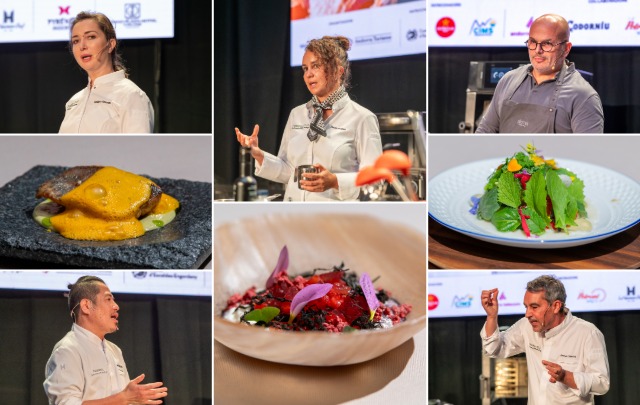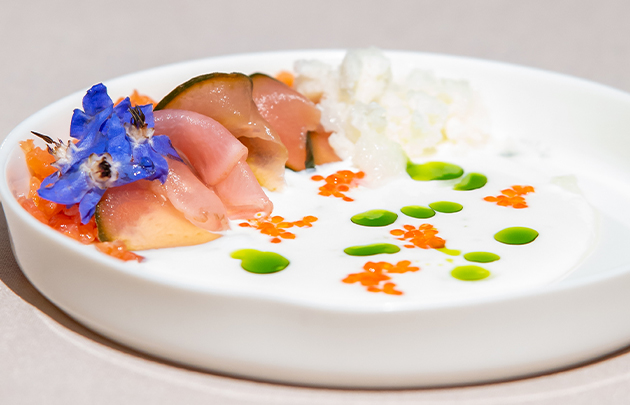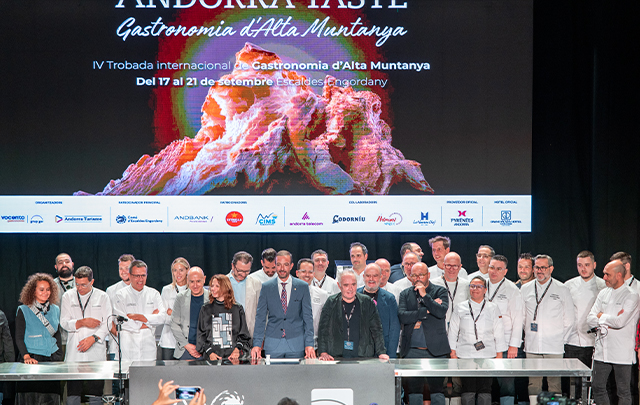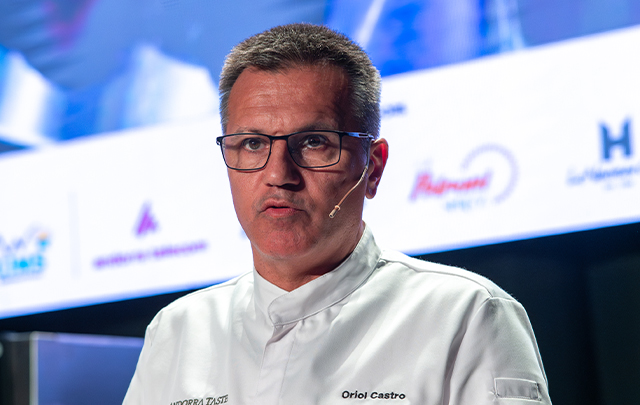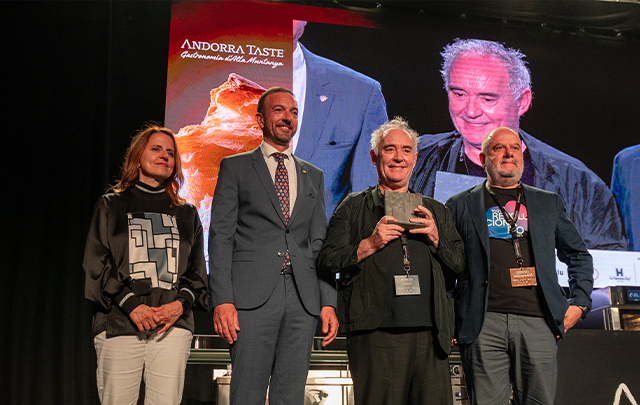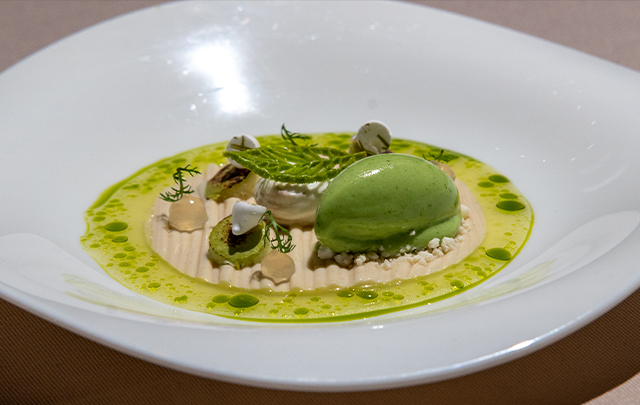News
Master of Wine Fernando Mora highlights the quality and character of wines produced at high altitudes, stating that they are 'restoring pride to the mountains'
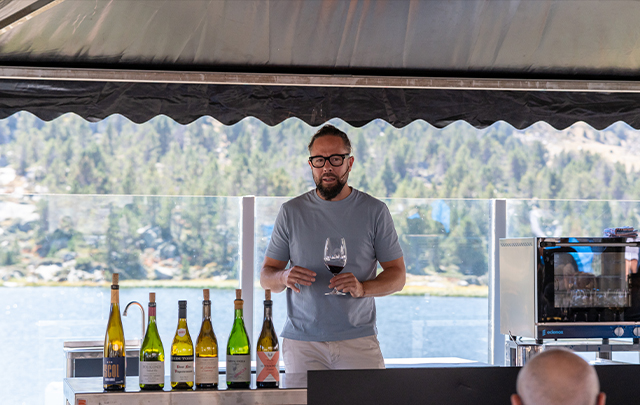
The expert winegrower emphasises the need to revive vineyard cultivation in mountainous regions: “There are difficulties to overcome, but what is difficult is always more valuable.”
Mr Mora concluded the fourth edition of Andorra Taste with a tasting dedicated to high-altitude wines, showcasing the excellence that can be achieved by combining good viticulture with a production process that brings out the best expression of a variety in a specific terroir. ‘In the mountains, the vine faces its limits, and it is at that boundary between chaos and precision that wines that touch the sky are born,’ he said. The session featured wines from the Old and New Worlds, each exceptional in its own right with a story to tell.
Mora began by explaining that high-altitude wines are those from vineyards at an altitude of at least 700 metres above sea level. Those grown at over 1,000 metres (five of the six wines tasted) are considered 'extreme' wines. ‘They all have one characteristic in common: scarcity,’ he said.
‘Only 3% of the world's vineyards are high-altitude vineyards, and this altitude also means isolation.’ Mora believes that now is a good time to invest in mountain viticulture. ‘In the past, vineyards were cultivated at high altitudes because the lower, more fertile lands were reserved for crops such as cereals.
Then, we moved the vines down the mountainside. Now, in places like Jumilla, we are finding that the same variety grown in the plains achieves unexpected and interesting expressions of complexity when planted at higher altitudes. This benefits not only the quality, but also the territory itself. With high-altitude wines, we are restoring pride to the mountains,” he said.
Despite the different characteristics that mountain terroirs can exhibit, there are common challenges that winegrowers face, such as inclement weather, irregular ripening and significant temperature variations, which give the wines greater structure, fruit concentration and verticality. These wines are fresher and more complex with a clean, crisp finish thanks to the winds, which prevent the development of diseases. Above all, they are very mineral.
To demonstrate the quality and character that high-altitude wines can develop, the Master of Wine presented five exceptional wines:
Escol Riesling 2015 from the Andorran winery Bordas Sabaté; this wine is produced from grapes cultivated on slate soil at an altitude of 1,190 metres.
- Zuccardi Polígonos Chardonnay 2023 from the Uco Valley (Mendoza, Argentina) from plots at an altitude of 1,500 metres with complex alluvial soils, vinified in cement tanks.
- Fredi Torres Visperterminen Pinot Noir 2022, produced in collaboration with the Swiss winery St. Jodern-Kellerei from vineyards at 1,100 metres in the Valais region of the Alps.
- La Calera del Escaramujo, Bodega Cerrón DO Jumilla from the Fuente Álamo winery (Albacete), is a single-varietal pre-phylloxera Monastrell, grown at 960 metres above sea level on a north-facing plot with a 17% slope.
- Cuesta Chica de Alcohuaz Garnacha 2023, Viñedos de Alcohuaz, Elqui Valley (Chile): one of the highest-altitude Garnachas in the world at 2,179 metres above sea level. It is one of the highest altitude Garnachas in the world at 2,179 metres above sea level.
To conclude the tasting, Fernando Mora uncorked a bottle of Supersónico 2022 from Bodegas Frontonio in Alpartir, Zaragoza — his own wine project committed to mountain viticulture and the restoration of ancient vines. “This wine was created to prove a wine critic wrong when he said that it was impossible to make wine at high altitudes in Aragon. I searched and searched until I found a 85–90 year old vineyard at an altitude of 1,030 metres.” It's a fresh, balanced, elegant, vertical and mineral Grenache. "You have to take these kinds of risks and embrace the unexpected," he said.


